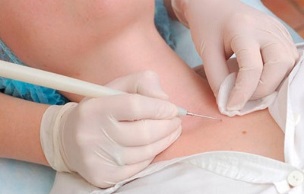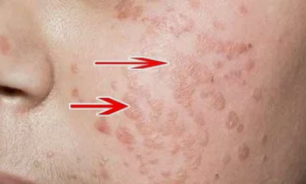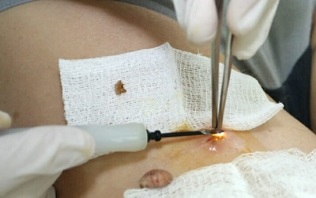
Human papillomavirus (HPV, HPV - human papillomavirus) or papillomavirus is a group of infections that includes more than 100 types of viruses, 80 of which are pathogenic to humans. According to World Health Organization statistics, 70% of the world's population are carriers of HPV. In most cases, the infection occurs after the onset of sexual activity and can be asymptomatic for a long time.
Causes of HPV infection
Symptoms of papillomavirus infection in women can be: various types of warts, flat and genital warts, cervical dysplasia. However, the most dangerous manifestation of the pathology is the development of cervical cancer. There is also evidence linking the development of cancers of the anus, external genitalia, vagina with infection with certain types of human papillomavirus (HPV type 16, 18, 45, 56).
Transmission modes:
- Sexual intercourse.It is the main route of transmission of human papillomavirus infection. The use of a condom during sexual intercourse significantly reduces the risk of infection with human papillomavirus, however, does not provide a reliable guarantee that infection will not occur, as the viral particles are very small in size.
- Home contact route.The causes of the infection are the use of home hygiene products of the joints: towels, soap, use of public toilet, bathroom.
- Natural childbirth. HPV can be transmitted to children who become infected when a child passes through the birth canal of an infected woman.
The source of this infection is cells of the patient's skin and mucous membranes. In this case, a person may not be aware that they have become a carrier of the virus, as warts and papillae may be tiny in size and remain invisible on visual examination.
Preliminary factors that contribute to the development of viral infection:
- the beginning of sexual activity at a young age.
- sex without a condom.
- frequent abortions.
- the presence of infectious diseases of the genitals.
- long-term use of oral contraceptives.
- reduced immune response of the body.
- non-observance of personal hygiene rules.
- if your sexual partner has HPV.
- exposure to frequent stressful situations.
- bad habits.
Through pores, cracks, micro-wounds of the skin and mucous membranes, the virus penetrates the basal layer of the epithelium, which ensures normal growth and renewal of the skin and mucous membranes. The DNA (deoxyribonucleic acid) of basal cell cells carries information about the healthy structure of cells. A viral particle, which is incorporated into DNA, changes this information, resulting in the formation of infected cells, which, in the process of growth and division, cause symptoms of the disease.
Symptoms of human papillomavirus infection in women
One of the possible manifestations of human papillomavirus infection is the appearance of genital warts and papillomas. These are specific formations that have the appearance of a cauliflower, a bunch of grapes or a rooster comb, pink-red or flesh. Depending on the type and type of virus, they can infect a person's skin and mucous membranes.
Genital warts can form around or near the anus, especially if there is anal contact.
Papules can appear on the skin around the toes, toes, hands, around the eyes, armpits and scalp. Sometimes they also form on the soles of the feet and cause a characteristic pain when walking.
This type of disease rarely degenerates into a malignancy and cancer, however, to prevent the disease from developing, the formations are surgically removed.
Consequences of HPV infection
Human papillomavirus in women can lead to significant increases in genital warts, papillomas, flat warts, which will cause discomfort, pain and when injured, bleeding of varying severity may occur.
The 18th and 16th types of HPV are the most dangerous, as they lead to the development of cancer. Cervical cancer, which has been reliably linked to human papillomavirus infection, ranks second among malignancies in women. The mortality rate from this reaches fifty percent.Flat warts

The disease is characterized by the formation of flat plaques that do not actually rise above the level of the skin.
Most often, the mucous membrane of the vagina and cervix is affected.
The cosmetic defect is much smaller than with genital warts.
This type of pathology has a higher risk of degeneration into cancer.
Dysplasia of the cervical mucosa
Pathology is a change in the normal structure of cells in the lining of the cervix called the atypical. This condition in gynecology is considered precancerous and requires monitoring and intensive treatment.
The disease in most cases is asymptomatic and is detected during a routine examination by a gynecologist. Dysplasia of various degrees of severity is distinguished: mild, moderate, severe. The choice of treatment method depends on the severity.
Cervical cancer
This is the most dangerous manifestation of the disease. Cervical cancer ranks second among tumor pathologies in women and is associated with HPV infection types 16, 18.
The disease can progress without clinical signs or is manifested by non-specific symptoms: weakness, increased fatigue, weight loss, the appearance of vaginal bleeding spots outside the menstrual cycle.
Methods of treatment of the disease
If there is evidence of HPV infection, given the risk of sequelae, do not self-medicate.
To choose the best treatment regimen, you should consult a gynecologist, who, after a thorough examination and testing, will prescribe adequate treatment.
To date, no drugs have been devised to cure HPV forever. The main goal of treatment is to reduce the concentration of the virus in the body to prevent further progression of the disease.
Main treatment areas:
- treatment of manifestations (warts, papillomas, dysplasia).
- antiviral therapy?
- the use of funds to increase immunity.
Presence of papillomas, genital warts, warts, areas of dysplasia, even small size, it is recommended to remove them, as the presence of neoplasms increases the concentration of viral particles in the woman's body, which contributes to its further development.
Surgical treatment
The methods for removing genital warts, papillomas, warts and dysplasia are as follows:
- surgery?
- cryotherapy?
- diathermy?
- laser coagulation?
- radio wave therapy?
- chemical attack.

The surgical method is to remove the growths with a scalpel, it is the cheapest method of treatment, however, after that, there remains a severe aesthetic defect and the healing period is significantly extended. There is also a risk of secondary infection. Therefore, this type of intervention is used in extreme cases.
During cryotherapy, liquid nitrogen is applied to the affected area, which freezes the pathological formation. After a few days, the papilla or tubercle disappears and a small wound forms beneath it, which heals in 10-14 days.
Diathermy coagulation is the application of high temperatures to areas of affected skin. This procedure is quite painful and therefore requires anesthesia. The disadvantage of this method is the formation of rough scars instead of pathological formations.
During laser coagulation, the effect of the laser beam on the affected area leads to the drying of the neoplasms. A dry crust forms in their place, which after a while disappears without leaving marks. This type of treatment is the mildest, but the high cost is considered a disadvantage.
Radiotherapy involves exposing the affected area to radio frequency waves. When using this type of treatment, there is no risk of bleeding, no severe scarring, but the disadvantage is the high cost.
The chemical method is used when there is a small formation. A special medicine is applied to the affected area. After several applications, a crust forms in the treatment area, which disappears after a few days.
Drug use
Drug treatment for human papillomavirus infection involves the use of the following groups of drugs:- antiviral drugs?
- immunostimulants.
Immunostimulants are prescribed after analysis and detection of a reduced level of immunity in order to increase the body's defenses, accelerate the emergence of immune cells and stimulate the production of antibodies aimed at fighting the virus.
Treatment of HPV infection in pregnant women
The presence of human papillomavirus infection in a woman's body does not affect the reproductive system and is not a contraindication to pregnancy. If HPV worsens during pregnancy, treatment for this condition is not performed during this period, treatment is prescribed after delivery.
However, a woman should be monitored by a doctor for the entire duration of her pregnancy. With the development of severe discomfort, mild treatment methods are prescribed. In extreme cases, when there are contraindications for vaginal delivery due to the development of HPV, a cesarean section is performed.Get rid of HPV with folk remedies
At home, you can use folk remedies such as herbal decoctions and infusions - to treat papillomas, ointments - to get rid of the resulting warts, papillomas and warts.
Ways to prepare a decoction and infusion for the treatment of human papillomavirus infection:
- Horsetail, nettle herb, rose hips, dandelion roots, plant leaves are mixed in equal amounts. At 3 o'clock large. Add 800 ml of water to the resulting mixture, boil for 10 minutes on low heat and then let it infuse for 3 hours. Spread 1 glass 3 times a day 30 minutes before meals.
- Oregano herb, yarrow, immortelle, St. John's wort, birch buds, nettles, calendula, coltsfoot, firewood roots, chamomile flowers, cord, salt leaves, ficelin, bark flowers, cumin seeds, sage are mixed in equal amounts. Pour 2 tablespoons into hot. large. the resulting mixture, pour 500 ml of boiling water, leave to infuse overnight. Take 0. 5 cups 4 times a day.
- Valerian root, lemon balm herb, oregano, linden flowers, hop cones, mother berries are mixed in equal amounts. Pour 1 tablespoon hot. large. the resulting mixture, pour 0. 5 liters of boiling water and leave to infuse for 3-5 hours. Apply 250 ml 2 times a day.
To deal with local events, the following apply:
- Celandine juice. The juice is made from fresh leaves or bought at a pharmacy. Before applying the product, the skin of the affected area should be steamed and the healthy areas near the affected area should be treated with a fat cream. Celandine should be applied carefully to the affected skin. The procedure should be repeated every two days for a week until the abnormal formation disappears.
- Garlic. The vegetable should be grated on a fine grater and mixed with skin cream until a viscous texture is formed. Apply the resulting mixture to areas of formations for 2-3 hours every day for a month. After the procedure, wash the skin with soapy water.
- Young walnuts. They must be crushed with a meat grinder, pour the resulting mixture into a glass jar of 0. 5 liters so that it fills 2/3, pour the remaining container with kerosene. Let it infuse for 20 days and then drain through the cheese factory. Infusion to treat affected skin 2 times a day.
After treatment and getting rid of the external manifestations of HPV, a woman should visit a gynecologist every six months to monitor and prevent further progression of the disease.














































































